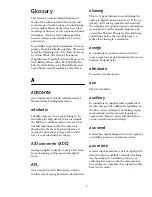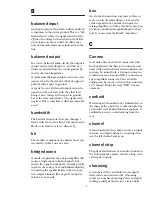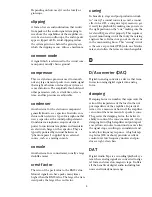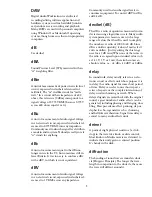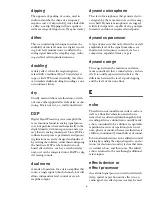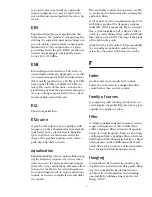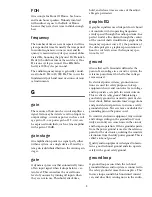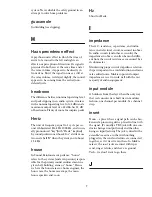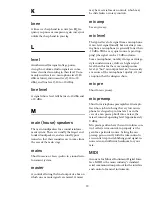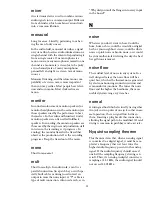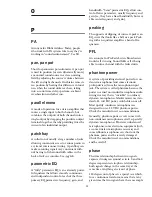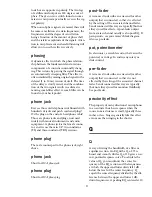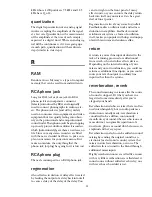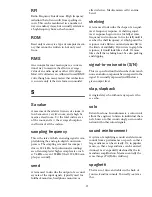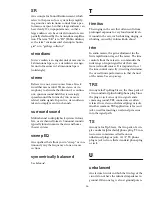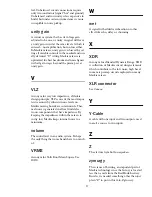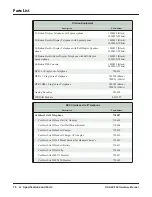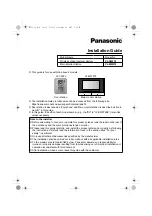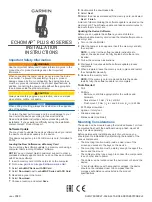
13
tude but are opposite in polarity. The two legs
of a differential output are 180 degrees out of
phase. The
phase reverse
switch found on some
mixers or mic preamps actually reverses the sig-
nal polarity.
When out-of-phase signals are mixed, there will
be some cancellation at certain frequencies, the
frequencies and the degree of cancellation
being a function of the amount of phase shift
and the relative amplitude of the signals. Atten-
tion to mic placement and careful listening will
allow you to use this effect creatively.
phasing
A dynamic effect in which the phase relation-
ship between the fundamental and overtone
components of a sound is continually chang-
ing. This is done by passing the signal through
an automatically sweeping filter. The effect is
often simulated by mixing original signal with a
delayed (1 to 10 ms) version of itself. The time
of the delay is slowly varied, and the combina-
tion of the two signals results in a dramatic
moving comb-filter effect. A comb filter can be
found in your back pocket.
phone jack
Ever see those old telephone switchboards with
hundreds of jacks and patch cords and plugs?
Or the plug on the end of a headphone cable?
Those are phone jacks and plugs, now used
widely with musical instruments and audio
equipment. A phone jack is the female connec-
tor, and we use them in 1/4” two-conductor
(TS) and three-conductor (TRS) versions.
phone plug
The male counterpart to the phone jack, right
above.
phono jack
Short for
RCA phono jack
.
phono plug
Short for
RCA phono plug
.
post-fader
A term used to describe an aux send (or other
output) that is connected so that it is affected
by the setting of the associated channel fader.
Sends connected this way are typically (but not
always) used for effects. A post-fader output
from a mixer channel usually is also post-EQ. If
pain persists, see your mixer’s block diagram.
Also see pre-fader.
pot, potentiometer
In electronics, a variable resistor that varies the
potential, or voltage. In audio, any rotary or
slide control.
pre-fader
A term used to describe an aux send (or other
output) that is connected so that it is not
affected by the setting of the associated channel
fader. Sends connected this way are typically
(but not always) used for monitors (foldback).
See post-fader.
proximity effect
The property of many directional microphones
to accentuate their bass response when the
source-to-mic distance is small, typically three
inches or less. Singers generally like this effect
even more than singing in the shower.
Q
Q
A way of stating the bandwidth of a filter or
equalizer section. An EQ with a Q of .75 is
broad and smooth, while a Q of 10 gives a nar-
row, pointed response curve. To calculate the
value of Q, you must know the center fre-
quency of the EQ section and the frequencies
at which the upper and lower skirts fall 3 dB
below the level of the center frequency. Q
equals the center frequency divided by the dif-
ference between the upper and lower 3 dB-
down frequencies. A peaking EQ centered at 10


